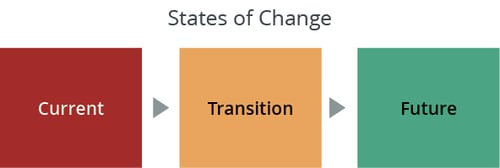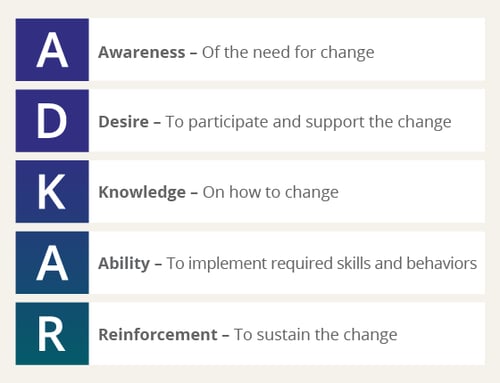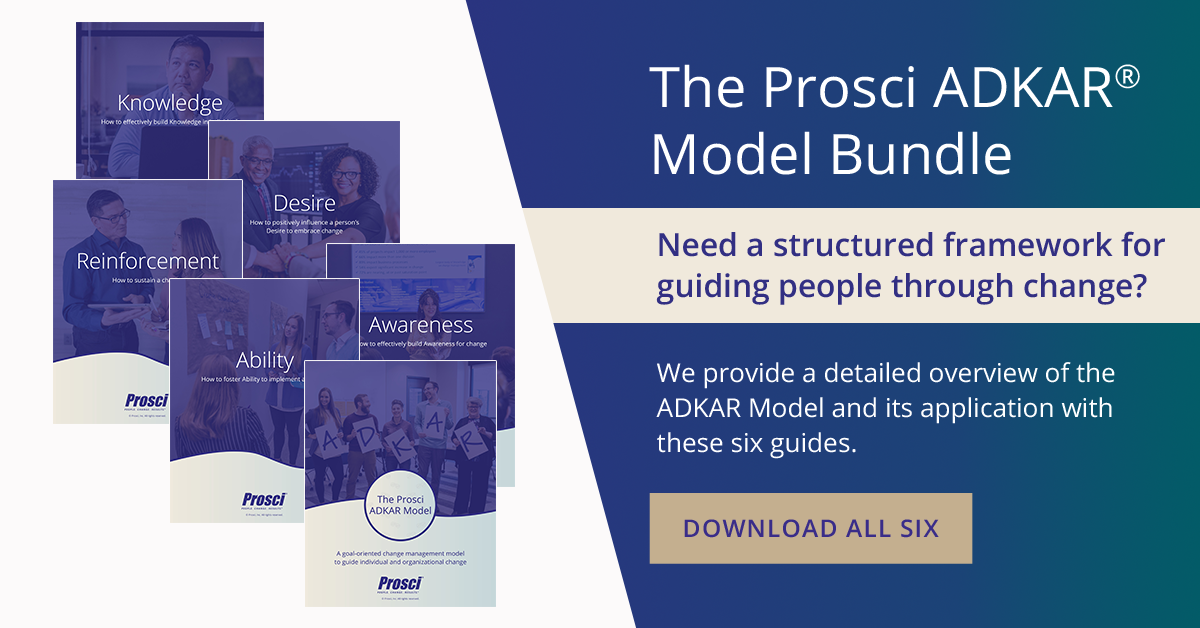The ADKAR Model: Don't Have A Rickety Knowledge Bridge

2 Mins
Updated: December 13, 2022
Published: June 8, 2016

I don’t know about you, but when I’m crossing a bridge, I want it to be solid. I am not one of those adrenaline-loving, thrill seekers who enjoys tempting fate by crossing a rickety, ancient bridge. I prefer a modern, well-designed and well-constructed bridge that will get me successfully to the other side, thank you very much. Why does this matter? A rickety-bridge analogy is a helpful way to think about change management.
Discover the Prosci ADKAR Model with our free eBook bundle.
Build Knowledge With
the Prosci ADKAR Model
Change is like a ravine with two banks. On one side is the current state or how things are done today. On the other side is the future state where people are able to act in new ways and have Reinforcement in place to keep them from going back to old habits.

Let’s think about the Prosci ADKAR Model in this context. As people stand in the current state, we need to build Awareness of the need for the change, and help them develop the Desire to to participate and support the change. We then bridge from the current state of Desire to the future state of Ability by providing Knowledge.
It's important to remember that we don’t want to jump straight to Knowledge. You want people to walk onto the bridge willingly rather than being shoved onto the bridge. Regardless, the Knowledge bridge is critical. You do not want a rickety, poorly planned Knowledge-building strategy to get people to the other side. You need something solid.

Critical Success Factors
of Project-Specific Training
In our Best Practices in Change Management research, participants share the critical success factors of project-specific training, including how they construct solid Knowledge-building bridges.
1. Planning/design
This factor is noted more than twice as often as the other five. Participants find preparation and design to be primary contributor to successful training, including incorporation of training needs assessments, audience customization, and proactive resistance management. Participants also identify involvement of the impacted audience during training development as an important success factor.
2. Timing
The second most frequent success factor is timing. Timeliness, or delivering just-in-time training, is a key contributor to the success of a training session. Additionally, the availability of training resources and flexibility within the training schedule had a direct impact on the effectiveness of project-specific training.
3. Ability and measurement
Participants determine success by measuring the demonstration of adoption and usage. They cite using management observation, post-training surveys, exams, monitoring support sites, and team usage as key means of measurement.
4. Awareness and Desire
Participants also identify the importance of pre-training approaches. Participants note higher audience engagement when information is provided ahead of time regarding training requirements, how it relates to a change, and what is expected of them during training. They include additional information about training schedules, locations and durations.
5. Trainee support
Participants report higher training success when they include support at leadership, management, peer and project-team levels. They provide this support through various modes, such as intranet, peer-to-peer coaching, consistent leadership messaging, one-on-one discussions, and Q&As.
6. Training approach
Having an engaging or hands-on approach to training is an additional success factor. Providing trainees an immediate opportunity to practice and apply what they learned aids in the success of training. Although some participants include a blended approach to training, many emphasize incorporating hands-on activities for the immediate Reinforcement of training.
Elevate Training With the ADKAR Model
As you approach managing a change, you do need think about more than just training, but that doesn’t mean that training is not critical. Incorporate these best practices into your training strategy and build a solid bridge to the future state.



